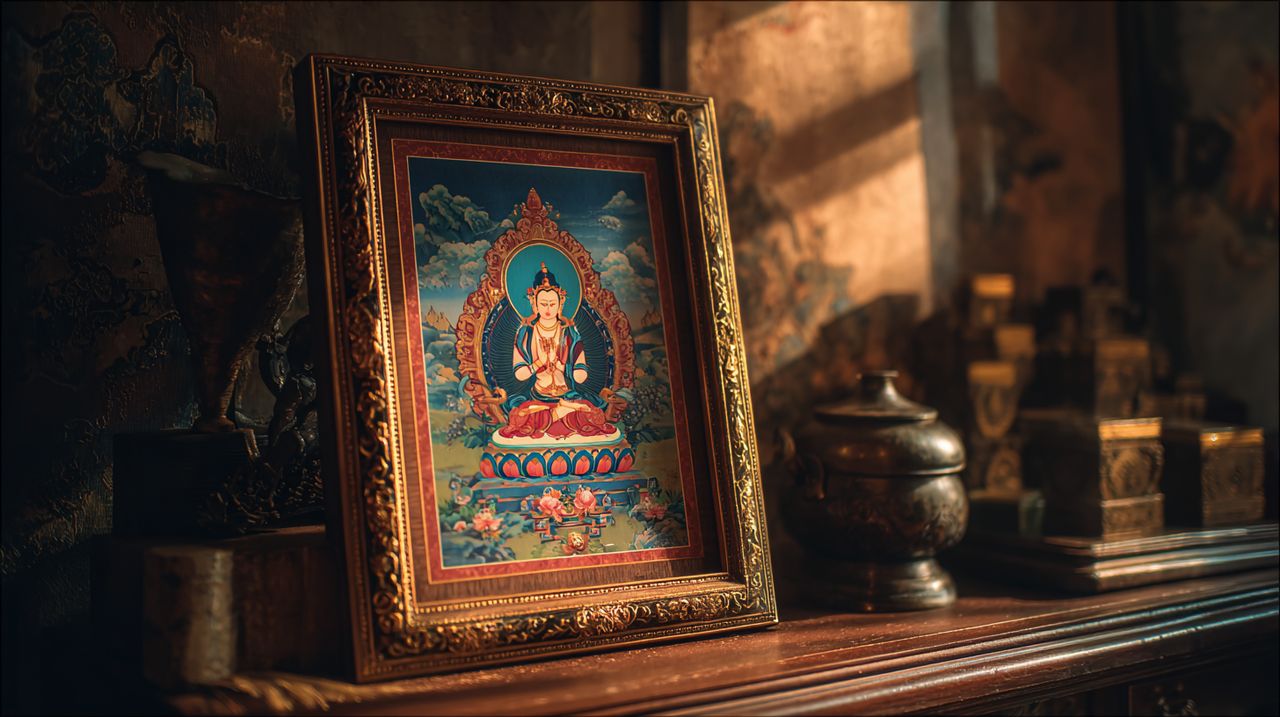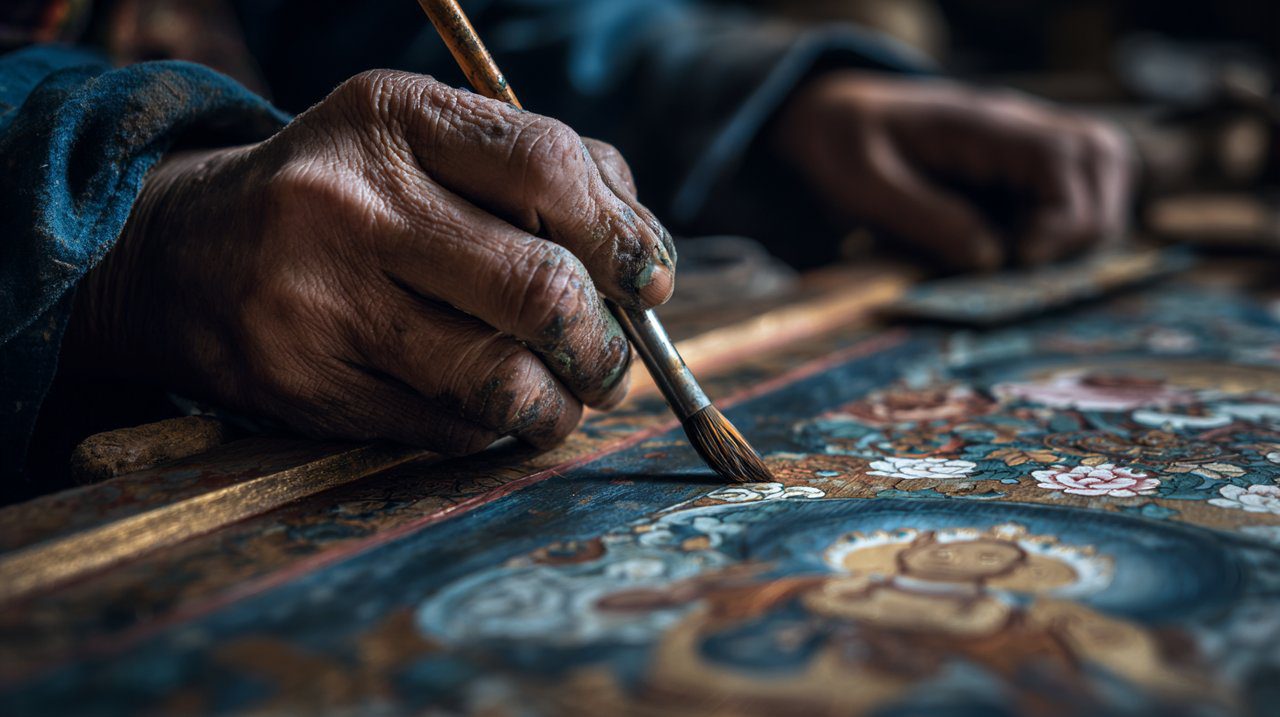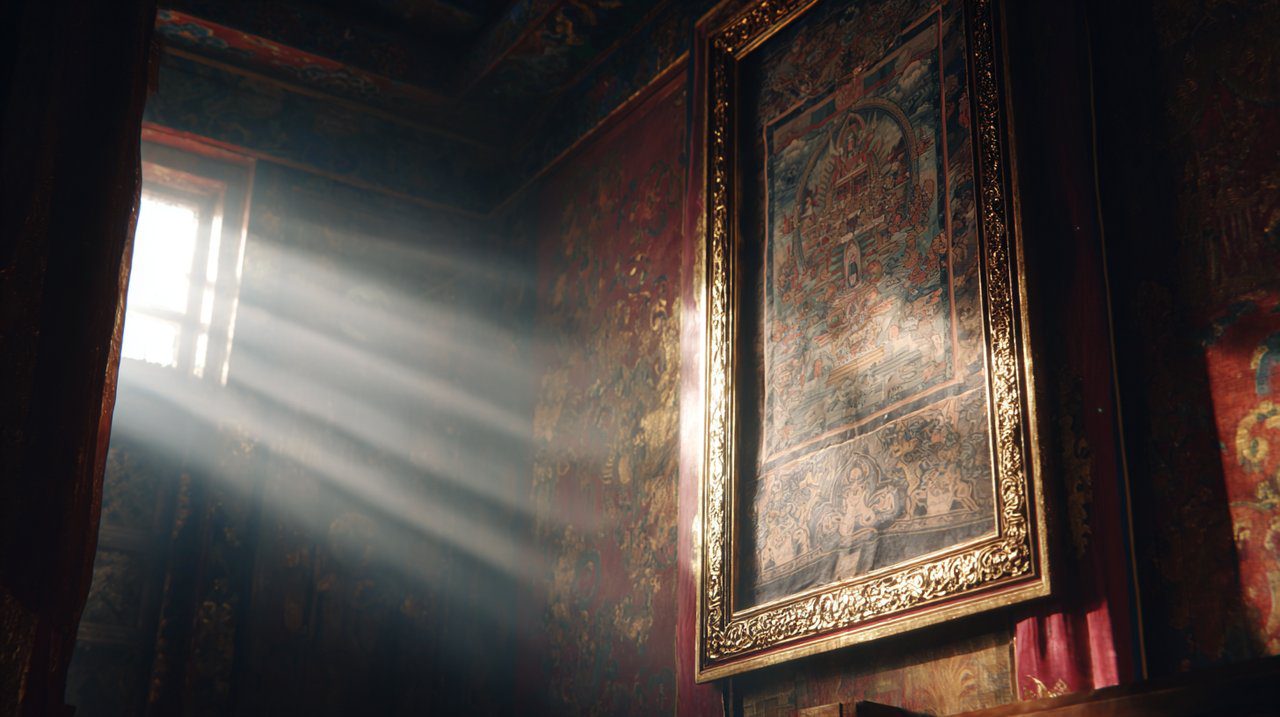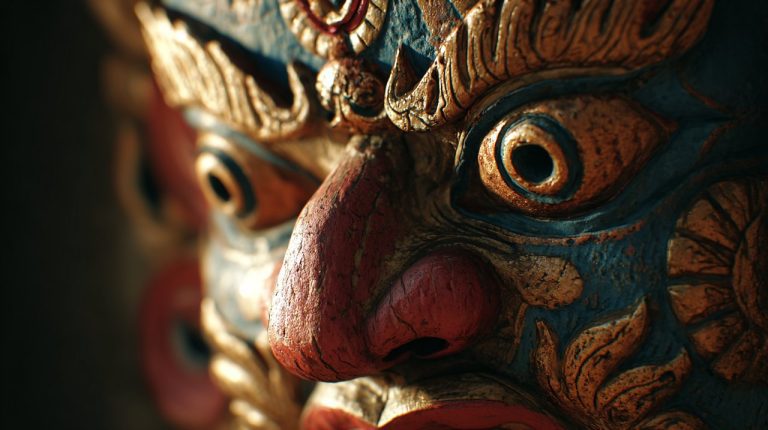The Silent Guardians: A Meditative Journey Through Tibetan Frame Design
When we look at a boundary, do we see just an ending, or can it, much like the gentle curve of a riverbank, actually cradle and elevate what lies within? For the Tibetan frame, its edge is never just a separation.
Instead, it’s a sacred embrace, thoughtfully inviting our gaze inward to a world brimming with profound meaning. Think of it as a silent guardian, much like an ancient mountain range that shelters its valleys and rivers, holding countless stories and spirits within its contours.
The Silent Guardians: Unveiling Tibetan Frame Design
Beyond their sheer aesthetic appeal, Tibetan frames serve as remarkably profound spiritual vessels. They aren’t simply decorative borders; they are integral extensions of the sacred art they contain, most notably Thangkas.

These frames meticulously define a consecrated space, similar to how a forest edge delineates a sanctuary for its inhabitants. They subtly draw the eye, guiding our contemplation toward the central deity or narrative, effectively transforming a simple viewing into a deeply meditative experience.
Just like the steady flow of a stream shapes stones over millennia, the design of these frames is incredibly deliberate. Every curve, color, and motif is imbued with a specific purpose, reflecting a deep reverence for the spiritual journey. They act as a gentle threshold, inviting us to step beyond the mundane and into a realm of devotion and wisdom.
Crafted Echoes: Artistry, Materials, and Techniques
The Artisan’s Hand: Wood, Pigments, and Gold
The creation of a Tibetan frame is an act of deep reverence, mirroring nature’s patient artistry. Artisans typically select durable woods like pine or cedar, chosen specifically for their strength and longevity – much like the enduring roots of an ancient tree.

These wooden foundations are then meticulously prepared with layers of gesso, creating a perfectly smooth canvas for intricate work. Mineral pigments, finely ground from precious stones and earths, bestow upon the frames their vibrant, captivating hues.
Gold leaf, often applied with meticulous precision, adds a radiant, ethereal quality. This careful application of materials echoes the detailed craftsmanship we often see in tibetan jewelry, where every bead and piece of metalwork contributes to a larger spiritual narrative. Each element is chosen not just for its beauty, but for its intrinsic symbolic value and its ability to reflect light, drawing the eye towards the framed imagery.
Forms and Embellishments: Carving and Painting Styles
The forms and embellishments found on Tibetan frames tell their own unique stories. Carvings frequently depict auspicious symbols and flowing patterns, often reminiscent of gentle waves or ethereal cloud formations.
These designs are never random; they are carefully selected to enhance the spiritual energy of the artwork within. Painting styles vary, but commonly feature intricate scrollwork, delicate floral motifs, and precise geometric patterns.
These embellishments create a wonderful sense of movement and continuity, subtly guiding the viewer’s gaze around the central image. They are like the subtle patterns etched by wind and water on a cliff face, where each detail contributes to the overall grandeur and meaning of the piece.
Whispers of Wisdom: Decoding the Symbolism
The motifs adorning Tibetan frames form a rich visual language, with each symbol whispering ancient wisdom. Let’s explore some of the most prominent:
- The dragon, for instance, often represents protection, immense power, and the life-giving force of rain, much like the thunderous clouds that nourish the earth.
- The lotus flower, which emerges unstained from muddy waters, profoundly symbolizes purity, spiritual awakening, and enlightenment. It’s a powerful reminder of spiritual growth, much like the focused attention found when counting mala beads during meditation.
- Other symbols, like the Dharma Wheel, represent the profound teachings of the Buddha.
These motifs are far from merely decorative; they are visual mantras, powerfully reinforcing the spiritual message of the artwork. The inclusion of such symbols, akin to the protective power attributed to dzi beads, transforms the frame into a guardian of sacred truth, offering blessings and guidance to the viewer.
Color as Language: The Palette of Devotion
In Tibetan art, color speaks a language of deep spiritual resonance. Each hue carries specific meanings, much like the changing colors of a mountain range reflect different moods and times of day. Consider this vibrant palette:
- Blue often signifies the boundless sky and profound wisdom.
- White represents purity and liberation.
- Yellow embodies the earth and the spiritual concept of renunciation.
- Red symbolizes vitality, passion, and spiritual attainment.
- Green is associated with nature, karma, and enlightened activity.
These colors are never chosen arbitrarily but are carefully applied to evoke specific emotional and spiritual responses. They create an energetic field around the central image, enhancing its power and inviting us into deeper contemplation. This palette of devotion is truly a visual hymn, with each shade contributing to the overall harmony and spiritual resonance of the framed art.
Rivers of Time: A Cultural and Historical Journey
Origins and Evolution: From Ancient Traditions to Monastic Art
The lineage of Tibetan frame design flows like an ancient river, tracing its origins back to the earliest Buddhist traditions. Initially, frames were quite simple, often functional elements like woven textiles or painted borders.

As Buddhism flourished in Tibet, the art of Thangka painting evolved, and with it, the frames became increasingly elaborate. They developed in close tandem with monastic art, frequently commissioned by influential monasteries and noble families.
Early influences from Indian and Chinese Buddhist art are clearly evident, reflecting a rich cultural exchange. For instance, the presence of elephants in Buddhist art, a symbol of strength and mental fortitude, beautifully showcases how diverse cultural elements were integrated into Tibetan iconography. Over centuries, these frames became sophisticated works in their own right, each contributing significantly to the preservation and presentation of sacred imagery.
Regional Variations and Influences
Just as different landscapes shape unique flora, various regions of Tibet developed distinct styles of frame design. For example, Central Tibet, with its major monasteries, often featured more elaborate and gilded frames, reflecting a greater concentration of wealth and patronage.
In contrast, Eastern Tibet (Kham and Amdo) might showcase bolder colors and more rustic, yet equally intricate, carvings. These regional differences are a wonderful reflection of local artistic traditions, the availability of materials, and the patronage of specific monastic lineages.
However, despite these variations, each frame style consistently maintained the core purpose: to elevate and protect the sacred art held within its embrace.
Beyond the Edge: The Frame as a Meditative Portal
So, we can see that the Tibetan frame is far more than a mere decorative border. It is a meditative portal, a silent guide that gently prepares the mind for deep contemplation. Like the natural enclosure of a hidden grotto, it meticulously creates a sacred space, inviting introspection and a profound connection to a deeper spiritual reality.
It holds and protects, much like the red string bracelet meaning often speaks of protection and blessing, albeit within a different cultural context. In its stillness, the frame teaches us about containment, about the immense power of defining a sacred space within the vastness of existence.
It reminds us that sometimes, true wisdom is found not in boundless expansion, but in the focused reverence of what lies within a carefully chosen boundary.
To gaze upon a framed Thangka is to embark on a journey, guided by the wisdom etched into its very edges. It’s a journey that invites us to discover the profound peace within ourselves. Just as nature beckons us to observe its quiet lessons, these frames invite us to explore the rich tapestry of Tibetan spiritual art. They offer us a glimpse into a world where art, devotion, and daily life are beautifully interwoven, prompting us to seek similar moments of profound connection in our own surroundings.
💡 Preguntas Frecuentes
Tibetan frames are considered profound spiritual vessels that serve as integral extensions of the sacred art they contain, such as Thangkas. They meticulously define a consecrated space, subtly guiding the viewer's gaze inward for a deeply meditative experience and acting as a gentle threshold between the mundane and a realm of devotion and wisdom.
Artisans typically use durable woods like pine or cedar, prepared with gesso for a smooth surface. Vibrant mineral pigments derived from precious stones and earths, and radiant gold leaf are applied. These materials are chosen not only for beauty but for their intrinsic symbolic value and their ability to reflect light, enhancing the spiritual narrative.
Carvings on Tibetan frames often depict auspicious symbols like dragons (representing protection and power) or flowing patterns reminiscent of waves and clouds. Painted designs commonly include scrollwork, floral motifs, and geometric patterns. These elements are carefully selected to enhance the spiritual energy of the artwork within, creating movement and continuity that guide the viewer's gaze and reinforce the artwork's message.
Colors in Tibetan art carry deep spiritual resonance. Blue signifies boundless sky and wisdom, white represents purity and liberation, yellow embodies the earth and renunciation, red symbolizes vitality and passion, and green is associated with nature and enlightened activity. These colors are carefully applied to evoke specific emotional and spiritual responses and create an energetic field around the central image.
The lineage of Tibetan frame design traces back to early Buddhist traditions, evolving from simple functional elements to increasingly elaborate works. As Thangka painting flourished, frames became more sophisticated, influenced by Indian and Chinese Buddhist art. Regional variations in Tibet also emerged, with areas like Central Tibet featuring more gilded frames and Eastern Tibet showcasing bolder colors and rustic carvings, all while maintaining the core purpose of elevating and protecting sacred art.








